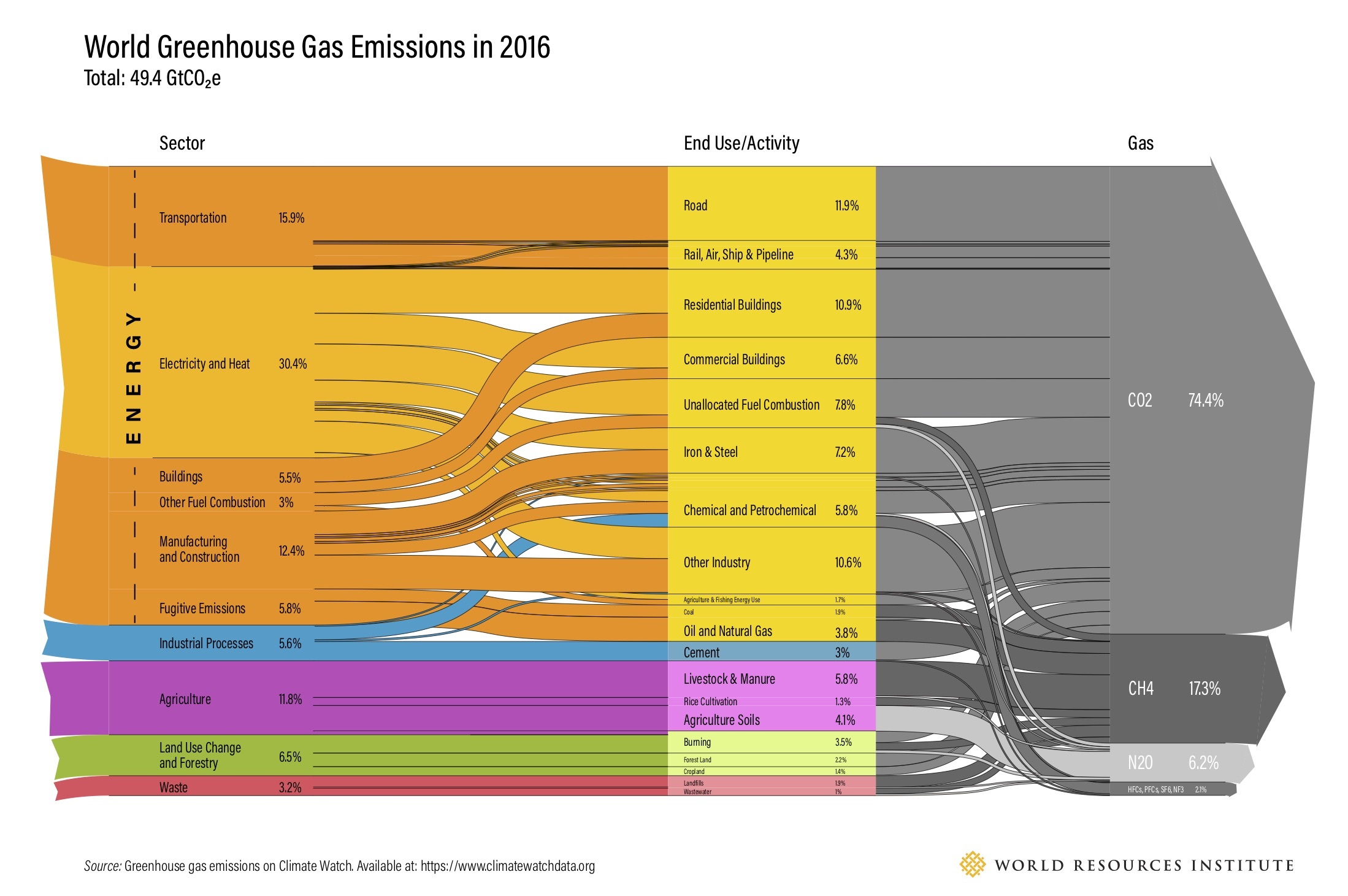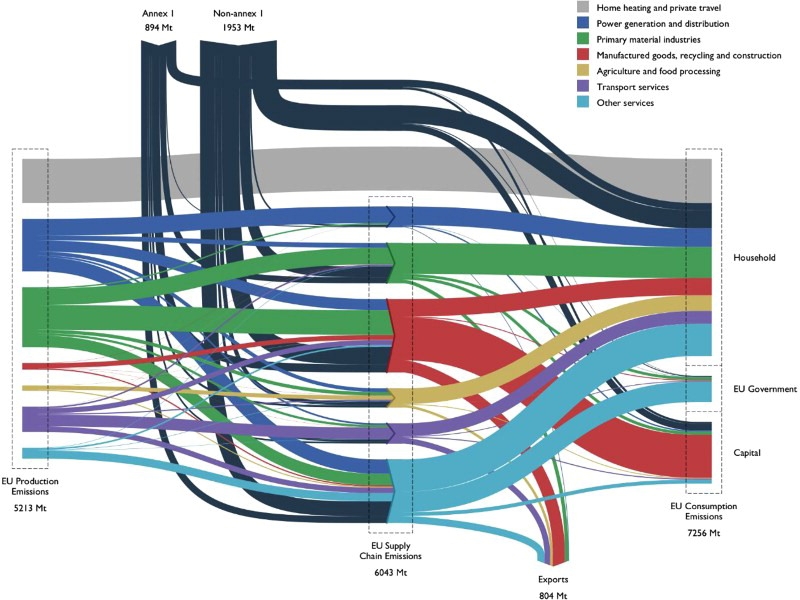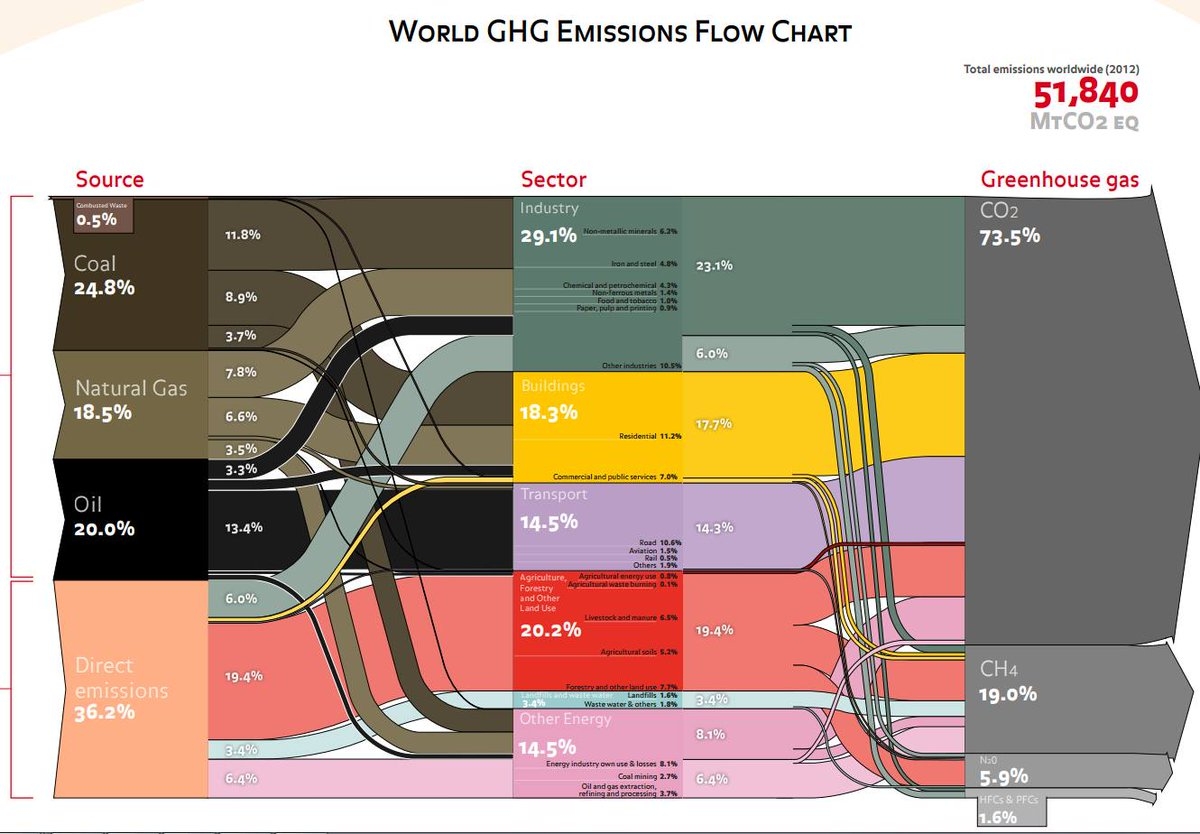Energy generation in China is dominated by the use of hard coal. This Sankey diagram is from an article titled ‘A Method for Analyzing Energy-Related Carbon Emissions and the Structural Changes: A Case Study of China from 2005 to 2015’ by Honghua Yang, Linwei Ma and Zheng Li (Tsinghua University) in: Energies 2020, 13, 2076; doi:10.3390/en13082076. It shows carbon flow and emissions (I take that as CO2 only, although it might include CH4 if biogas was used)
Published under the terms and conditions of the Creative Commons Attribution(CC BY 4.0) license
Depicted are energy-related carbon flows in China in 2015. Unit of flow is 10 Mt C, which in the last column also translates into Mt CO2.
The sectors Transport (“Vehicle”), Industry (“Factory”) and Buildings are further broken down into the individual services the energy provides, like illumination, thermal comfort, hygiene.
There is another energy flow diagram for China in 2015 in this article, and it shows that there are also other energy sources (hydro, wind, nuclear, solar), but these don’t show up in the carbon flow diagram.




